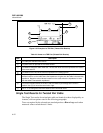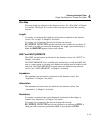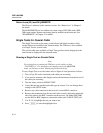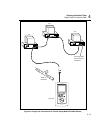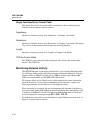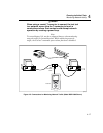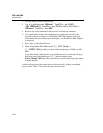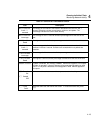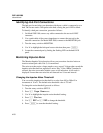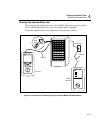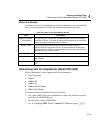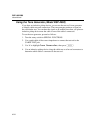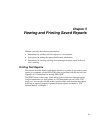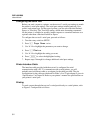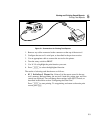
DSP-100/2000
Users Manual
4-20
Identifying Hub Port Connections
The hub port locator helps you determine which port a cable is connected to at a
hub. The locator sends a link pulse to the hub, causing the port’s LED to blink.
To identify a hub port connection, proceed as follows:
1. On Model DSP-100, remove any cable connected to the test tool’s BNC
connector.
2. Use a patch cable of the correct impedance to connect the test tool to the
network connection. On Model DSP-2000, connect to the MONITOR jack.
3. Turn the rotary switch to MONITOR.
4. Use D to highlight the hub port locator selection; then press E.
5. Locate the connected port by finding the flashing LED on the hub’s LED
panel.
Monitoring Impulse Noise
The Monitor Impulse Noise function allows you to monitor electrical noise on
inactive twisted pair cable. Pair 3, 6 is monitored.
The noise test takes noise voltage samples every second. Voltages that exceed the
impulse noise threshold are regarded as noise “hits.” If the 10BaseT standard is
selected, the noise test results include a pass or fail indication. A fail result is
displayed if more than two noise hits are detected in a 10-second interval.
Changing the Impulse Noise Threshold
You can set the impulse noise threshold to a value from 100 to 500 mV in
increments of 10 mV. The default noise threshold value is 270 mV.
To change the noise threshold, proceed as follows:
1. Turn the rotary switch to SETUP.
2. Press $ Page Down once.
3. Use D to highlight the impulse noise threshold setting.
4. Press ! Choice.
5. Use # DEC or $INC to change the threshold.
6. Press E to store the threshold setting.



